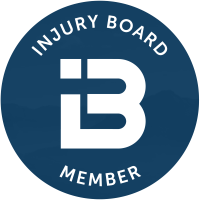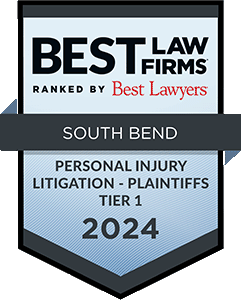 If you take legal action after suffering a personal injury, you may be entitled to various types of compensation. Below, we discuss the non-economic damage of pain and suffering and how insurance companies set a monetary value for it.
If you take legal action after suffering a personal injury, you may be entitled to various types of compensation. Below, we discuss the non-economic damage of pain and suffering and how insurance companies set a monetary value for it.
Unfortunately, insurance companies are not interested in fairly compensating accident victims. This is why accident victims often work with a lawyer. Our South Bend personal injury lawyers know how to determine the full value of your pain and suffering and other damages and we can answer your questions during a free consultation.
What Is Pain and Suffering?
Pain and suffering refers to the various emotional and physical damages that stem from an accident, which can include:
- Physical pain
- Fear
- Grief
- Worry
- Insomnia
- Emotional distress
- Inconvenience
- Discomfort
Personal injury victims may be able to recover compensation for these types of damages. However, it can be difficult to quantify pain and suffering because these damages are not linked to a monetary loss, such as the cost of medical expenses or lost wages.
Insurance adjusters will look for objective proof of pain and suffering. This may include proof that you are seeking continuing medical treatment, that you mention pain in your communication with your health care professional, and pictures and journal entries that show your injuries as they develop.
How Do Insurers Calculate the Value of Pain and Suffering?
There is no exact standard in place for calculating pain and suffering damages. Juries often consider what they think would be fair if they were in a similar situation and suffered in the way that the plaintiff did.
Insurance companies may use one of more of the following strategies:
The Multiplier Method
The multiplier method multiplies a variable by the amount of economic damages, which include medical expenses, property damage and lost wages. This variable may be as low as 1.5 or as high as five.
For example, if someone suffered economic damages of $100,000 and 1.5 was the variable, the pain and suffering damages would be $50,000. In the same example, the pain and suffering damages would be $500,000 if the variable was five.
The variable depends on several factors, including:
- The type of injury
- The seriousness of the injury
- Whether a full recovery is likely
- The impact of the injuries on the victim’s daily life
- The liable party’s percentage of fault
The Per Diem Method
The per diem method applies a daily rate for each day the plaintiff suffered. For example, if the daily rate is $500 and the plaintiff suffered for 30 days, the value of the pain and suffering claim would be $15,000. A higher value is attached when the timeline for pain and suffering is longer or the rate is higher.
Insurance companies often prefer not to use this method with long-term injuries because the value can be very high, and insurance companies want to pay out the least possible amount of compensation.
Hybrid Method
Some insurance adjusters may combine these methods and then make an adjustment for the specifics of the accident. For example, the insurance adjuster may use a daily rate for the suffering and then add a small multiplier to the economic damages.
Insurance companies do not have to use these tests to calculate pain and suffering. Some insurance companies use special computer software programs that provide a settlement value based on the amount of economic damages, the type of medical treatment the plaintiff received, and the amount of other settlements and court decisions that involve similar factors.
Contact a Lawyer for Assistance
it can be difficult to quantify pain and suffering damages. That is why it is important to work with a personal injury lawyer who can advocate for your best interests. The qualified personal injury attorneys at Pfeifer, Morgan & Stesiak can argue for a higher value for your pain and suffering claim and aggressively negotiate for fair compensation for these kinds of damages.
We will discuss the potential value of your claim during a free consultation. We work on a contingency fee basis, so you owe us nothing unless we successfully recover compensation on your behalf.
Our firm can be reached by calling (574) 444-0741.











